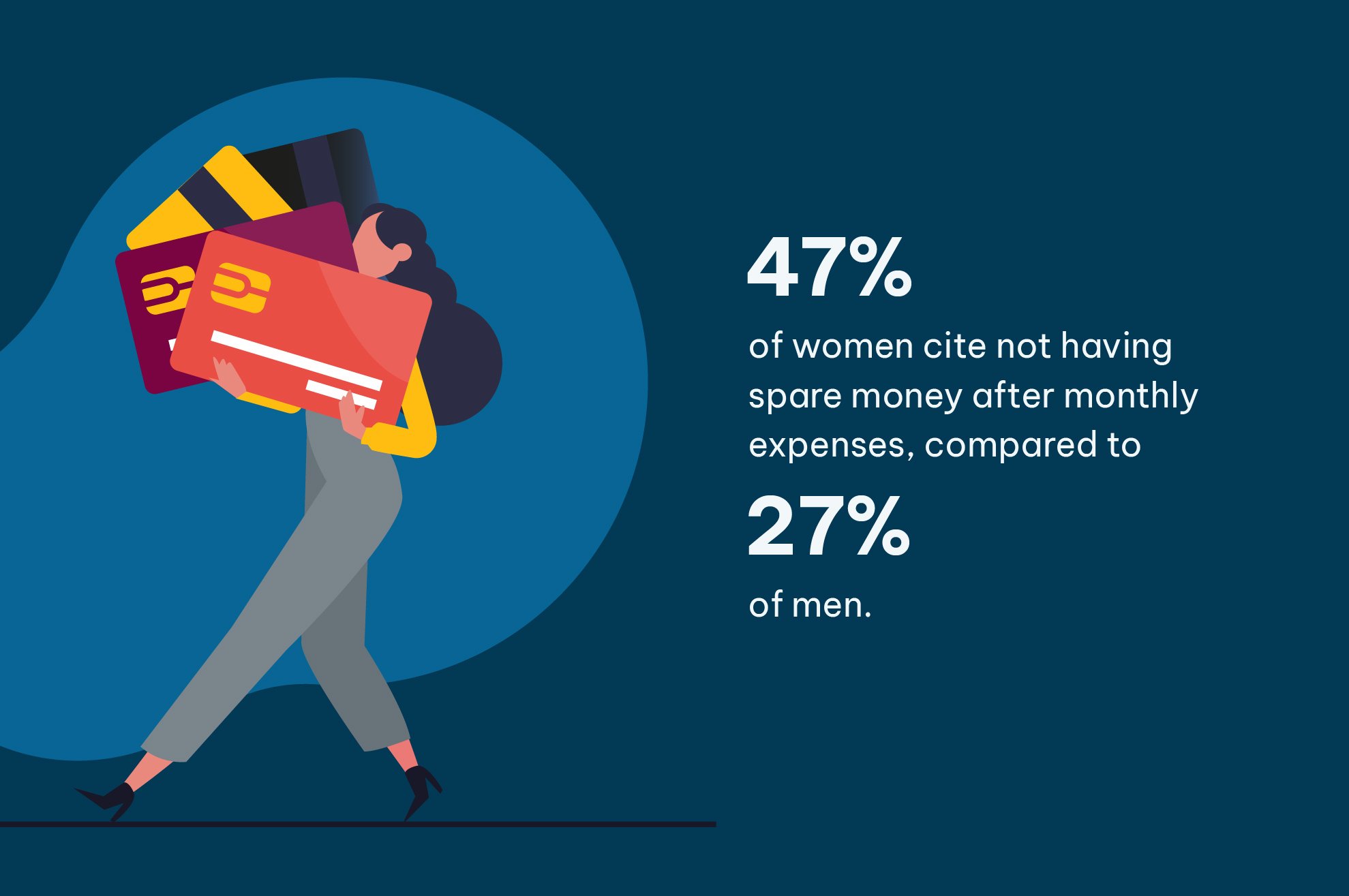In our initial article on this topic, we talked about the impact of financial difficulty on employee stress. Financial problems are one of the leading causes of stress, and stress is one of the leading causes of worker fatigue and burnout. Helping employees feel less stressed about their finances, then, can go a long way in improving the company's bottom line.
One unfortunate reality about financial well-being is that it is not distributed equally. Financial well-being, as well as objective financial position, varies widely depending on factors such as age, race, ethnicity, religion, geographical location, sex, and gender.
The discrepancy in financial well-being between men and women is particularly pronounced. Fortunately, global payroll offers tools for reducing the gender pay gap.
Women Feel Less Financially Well Than Men
Despite the incredible progress in gender equality over the past century, there is still a significant gap in financial status between men and women. This is seen most acutely in terms of financial well-being: not simply how much money you have in the bank, but how you feel about your overall financial position.
A minority of women feel good about their finances. According to the Bank of America 2022 Workplace Benefits Report, 42% of women rate their financial wellness as good or excellent, compared to 46% of men. ¹
Debt is a major factor in financial well-being, and men are more likely to feel in control of their debts compared to women. About 51% of men say they feel in control of their debts, compared to 33% of women. ²

Credit card debt is one of the most common forms of debt, and this is seen in the financial goals of men and women. According to the 2020 Bank of America report, 21% of women rank paying off credit card debt as one of their top 3 goals, compared to only 9% of men.
Another major factor in financial well-being is having spare money left over after monthly expenses. Again, the disparity between men and women is significant. 47% of women cite not having spare money after monthly expenses as their main challenge, compared to 27% of men.
Although these results are specifically about how people feel about their financial security, they reflect different realities in the objective financial positions of men and women. Women feel less financially well than men because, on average, they are financially worse off. his disparity is in large part due to cultural factors hindering womens' work expectations.
Why Women Feel Less Financially Well
The first and most infamous reason for the financial disparity between men and women is the gender wage gap. Women tend to earn less than men on average, both in absolute terms, and when comparing for the exact same positions. However, the exact pay gap is hard to measure and varies widely by age and education level. Pew Research estimates that women earned 84% of what men earned in 2020.
Another reason for financial disparity is the likelihood of leaving the workforce. Women are more likely to take time out of the workforce to raise children or provide care for a family member. This is partially due to a cultural expectation that women take care of other people, and partially due to the fact that pregnancy, birth, and breastfeeding are roles that are exclusive to biological women. That being said, paternity leave is increasingly becoming expected of men, and this helps put men and women on a more even playing field.
Gender Gap Closure By Region
Different regions of the world have different cultural expectations of the sexual division of labor, and consequently offer different work and pay experiences to women.

Western Europe has succeeded the most in closing the pay gap, in large part due to its widespread social safety nets and care programs. In Sweden, for example, employed men are required to take several months leave when they father a child. This helps balance the need for men and women to take time off.
North America falls just behind Western Europe in the balance of childcare. Its ideals of democracy and freedom promote the ability of women to further their lives, but the lack of strong social safety nets can hinder them.
The Middle East and Africa are at the opposite end of the spectrum, where cultural attitudes give women less independence and make it more difficult to excel in the workforce.
The Impact of COVID-19 on Women
Women are more likely to leave the workforce to care for family, and the COVID-19 pandemic exacerbated that trend. In particular, mothers were more likely than fathers to consider scaling back or leaving work because of COVID. Daycare programs were reduced or halted, while school went online, making it necessary for at least one parent to stay home.
Statistics paint a startling portrait of how 2020 alone affected women in the workplace. According to the 2020 Bank of America report, the gender gap for emergency savings widened significantly that year: 55% of men reported being able to meet their basic expenses if they were out of work for an extended period of time, compared with 29% of women. In 2012, those numbers were roughly equal, about 35%.³ Rising inflation over the past year has only made the problem worse for everybody, as only about 37% of consumers currently have enough savings to cover a month's worth of expenses.⁴
Supporting the Financial Wellbeing of Women with Gender Pay Gap Reporting and Analysis
Knowledge is power. Knowing your payroll data empowers your company to make better, fairer, and more equitable decisions.

Traditional payroll accounting methods, reliant on Excel spreadsheets and even pen-and-paper calculations, tend to offer a poor glimpse of what's going on, even for small companies. To truly know where your payroll is fair, and where it needs improvement, you need a modern global payroll solution like Immedis.
Immedis offers automatically generated payroll reports that deliver real-time information on payroll across multiple demographic lines, including gender, sex, age, race, and more. It offers the insights you need to improve the financial well-being of your employees and make them happier and more productive at work and in their personal lives.
¹ 2022 Bank of America Workplace Benefits Report
² 2020 Bank of America Workplace Benefits Report
³ 2020 Bank of America Workplace Benefits Report
⁴ Consumer Financial Protection Bureau 2022 Report

